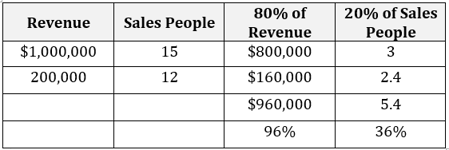Okay… so I know you might be thinking, “What the heck does growing sales have to do with a peanut butter and jam sandwich… AND why jam and not jelly?”
Not “jelly” because… well, I really don’t like jelly. I grew up with my Mom’s homemade strawberry jam. And, for years, I would just eat jam sandwiches because I didn’t like peanut butter. But then…
THE SALES GROWTH & PB&J CONNECTION
In 1973, I was offered a full scholarship to play football at Boston University. I accepted and signed my letter of intent but, later in the year, that coaching staff left BU and went to UConn and so I followed.
As a senior offensive lineman at Hammonton High School in New Jersey, I was 6’4” and 170 lbs. on a heavy day. I was instructed to consume more calories, lift more weights and ingest lots of protein to build muscle. Peanut butter was now part of my dietary intake. During the summer leading up to my freshman year at UConn, I would consume 10,000 calories a day. That included breakfast and then 5 peanut butter and jam sandwiches between breakfast and lunch. So, there you go.
As any peanut butter and jelly/jam aficionado knows, when making the perfect sandwich, you want to spread both ingredients all the way to the edges of the bread. No bread uncovered. You spread peanut butter on one slice, jam/jelly on the other slice and then smash the two slices together so that the combination of ingredients oozes out of the sides of the sandwich. Then, just cut in half and eat!
The first time I heard the expression, “Let’s not spread our training program dollars around like peanut butter” was from George Emmons, then president of the community bank at Key Bank. I asked him what he meant by that. He said, “Tony, we have limited resources to get this done and so we have to be judicious in how we use our dollars. We have markets like Seattle that are our highest potential growth market and then we have a market like Vermont. Vermont is a great market for us - very strong - but we already enjoy sizable market share there, so our ROI isn’t going to be as great. We need to invest our dollars where we get can get our greatest return.”
And there, my friend, is the connection between building a sales growth sales team and making a peanut butter and jam sandwich!
Now, on to growing sales …
“PEANUT BUTTER” AND YOUR SALESPEOPLE
When you think about your sales team, the collective book of business and the market pool, you have to be more intentional in your investment of time money and effort. Not all of your salespeople are equal, not all of the clients represented in the book of business are equal and not all of the businesses/people/prospects that are available in the market place can bring you the same revenue, value or profit. Given the variability, you cannot (and should not) spread your resources like peanut butter.
In my previous articles and blog posts, I’ve talked about the 80/20 principle - the simple concept that 80% of your results come from 20% of your efforts. You can substitute efforts with people - salespeople, client people, people in the market, etc. Having said that, I highly recommend you follow Perry Marshalls process of the 80/20 of the 80/20. Simply stated: Do the 80/20 math again with the remaining salespeople, clients and prospects. See below as an example of how to segment a revenue book. (click here to read the detailed article about the 80/20 of the 80/20).

I believe the chart is easy enough to follow. The key things here to recognize are:
- About 96% of your results are coming from just 36% of your team
- That 36% isn’t tapped out – the top 3 might be, but if you add admin and support staff, you can probably get them to double productivity – spend “peanut butter” differently for this group than for the rest of the group.
- You have great opportunity/potential in the 2nd group of 80/20 – the next 3 salespeople (next quintile). Lots of “peanut butter” (intentional coaching) here in training, development, management, marketing/lead generation resources.
- The last quintile - the bottom 3 people - are not going to get you to the mountaintop based on their current productivity. Unless they are brand new, they not only get zero “peanut butter”, but they also get the opportunity for alternative employment.
- Some of the people in the bottom quintile might be there because they are new to the organization, so don't’ abandon them; however, make sure you have a very intense on-boarding program to make sure they climb into the next quintile and beyond quickly. Lots of “peanut butter” here.
- Your middle quintiles - salespeople in the middle 33% of the company - need to get lots of attention (“peanut butter”) for a short period of time because they have to demonstrate that they can actually produce the way you thought they would when you hired them… or they unfortunately validate that you made a hiring mistake.
WHEN TO USE A LOT OF “PEANUT BUTTER”
Follow this same process when analyzing the individual books of business for each salesperson. Your salespeople should not be treating them all the same. The top 33% of the book brings over 90% of the revenue – treat them that way – with LOTS of “peanut butter”.
And, finally, when approaching the market place, use the information/data from the analysis above when looking at the individual books of business. Identify the common characteristics in the top 33% of the book of business and then look for new opportunities that look like your top 33%. Stop spending time, money, effort and peanut butter pursuing anybody in the market place that doesn't (or have any chance to) look like your top 33% of your current clients. (There us a great book on this concept, Selling to Zebras)
Additional Resources:
NO MORE HIRING MISTAKES - Hirebettersalespeople.com





